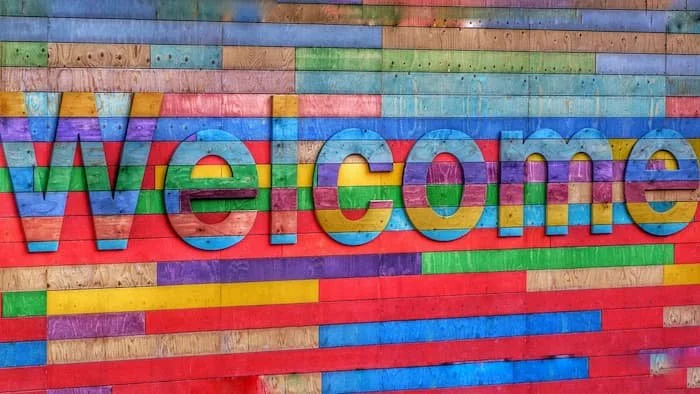Your Website Is Your Most Valuable Digital Real Estate
The Digital Home Base That Actually Pays the Bills
Picture this: You’re at a networking event, coffee in hand, exchanging business cards like they’re Pokemon cards. You meet Sarah, a brilliant consultant who’s absolutely crushing it with her Facebook ads. She proudly shows you her gorgeous landing pages on her phone — they’re conversion machines, each one perfectly crafted for a specific campaign.
But then I ask the inevitable question: “What’s your website?”
Crickets.
“Oh, I don’t really need one,” she says with a wave. “I just send people to my landing pages.”
Friends, this is like being a real estate mogul who lives in a series of Airbnbs. Sure, those landing pages are working hard (bless their digital hearts), but without a proper website, you’re essentially homeless in the digital world.
Photo by Lee Campbell on Unsplash
Your Website: The Digital Equivalent of a Forever Home
Think of your website as your digital home base — not just any home, but your forever home. It’s where people come to really get to know you, where they can wander from room to room (page to page), peek into your personality, and decide if they want to stick around for dinner (or better yet, hire you).
Landing pages? They’re like those pop-up shops that appear in vacant storefronts during the holidays. They serve a purpose, they can be incredibly effective, but they’re temporary by nature. They exist to capture attention for a specific moment, a particular campaign, a single conversion goal.
But your website? That’s your digital address. It’s where you plant your flag and say, “This is who I am, this is what I do, and this is why you should care.”
The User Journey: Welcome to Your Digital Open House
Let’s talk about the journey your visitors take when they stumble upon your digital doorstep. Unlike a landing page that essentially screams “BUY NOW OR FOREVER HOLD YOUR PEACE,” your website allows for a more nuanced courtship.
Photo by Ruthson Zimmerman on Unsplash
The Front Porch (Homepage): This is where first impressions happen. Your homepage is like that perfect front porch swing — inviting, comfortable, and giving just enough of a peek inside to make people curious. It should answer the three questions every visitor has within 3.7 seconds of arrival: Who are you? What do you do? Why should I care?
The Living Room (About Page): Here’s where the magic happens. Your About page isn’t really about you — it’s about them. It’s where you transform from a random stranger on the internet into someone they’d actually want to grab coffee with.
Share your story, but make it their story too. Why did you start this business? What problem were you desperately trying to solve? Chances are, your ideal client has that same problem.
The Office (Services Pages): These are your money pages, but they shouldn’t feel transactional. Think of them as consultations rather than sales pitches. Each service page should speak directly to a specific pain point, walking your visitor through their problem and positioning your solution as the obvious next step.
The Psychology Behind the Pages
Here’s the thing about human psychology: we’re tribal creatures who need to feel like we belong before we buy. A well-crafted website creates that sense of belonging in ways that isolated landing pages simply cannot.
Photo by Vonecia Carswell on Unsplash
Your About page, for instance, taps into something psychologists call “similarity bias” — we naturally gravitate toward people who are like us or who have experienced what we’ve experienced. When someone reads your story and thinks, “Oh my gosh, she gets it,” you’ve just created a connection that no amount of flashy graphics or compelling copy can manufacture.
Your service pages work on a different psychological principle: social proof and authority. When visitors can see the breadth of your expertise, read testimonials from happy clients, and understand your unique approach, they’re not just buying a service — they’re buying into your ecosystem.
The Conversion-Focused Homepage: Your Digital Welcome Mat
A conversion-focused homepage is like a really great party host — it makes everyone feel welcome while gently guiding them toward the good stuff. Here’s the secret sauce:
Above the fold: Clear headline that speaks to your ideal client’s primary pain point, a subheading that explains how you solve it, and a call-to-action that doesn’t feel pushy.
The middle ground: Social proof, client testimonials, or logos of companies you’ve worked with. This is where visitors think, “Okay, other smart people trust this person.”
The bottom line: A secondary call-to-action for people who need a little more convincing, plus easy navigation to your most important pages.
Photo by Belinda Fewings on Unsplash
Service Pages That Actually Serve (Your Bottom Line)
Your service pages should be less “Here’s what I do” and more “Here’s what your life looks like after I do it.” Paint the picture of their transformation, not just your process. Instead of listing features, focus on outcomes. Instead of talking about your 20 years of experience, talk about what those 20 years mean for their results.
The Landing Page Trap (And Why Sarah Needs a Website)
Don’t get me wrong — landing pages have their place in the digital marketing ecosystem. They’re fantastic for specific campaigns, product launches, or capturing leads from targeted ads. But relying solely on landing pages is like trying to build a relationship through speed dating. You might get some numbers, but you’re missing out on the deeper connections that turn into long-term clients.
When Sarah sends potential clients to a landing page, she’s asking them to make a decision based on limited information. But when someone visits a full website, they can browse, explore, get comfortable, and make an informed decision. They can read her story, understand her approach, see her expertise, and feel confident that she’s the right fit.
Your Website: The Gift That Keeps on Giving
Unlike landing pages that live and die with specific campaigns, your website is an asset that appreciates over time. Every blog post you publish, every testimonial you add, every page you optimize makes it more valuable. It’s working for you 24/7, building trust with potential clients while you sleep.
Plus, there’s something to be said for SEO. While landing pages are temporary guests in the search engine world, your website is a permanent resident. Over time, it builds authority, ranks for keywords, and becomes a magnet for your ideal clients.
The Bottom Line (Or Should I Say, Bottom Dollar?)
Your website isn’t just digital real estate — it’s prime digital real estate in the best neighborhood on the internet. It’s where relationships begin, trust is built, and conversions happen naturally rather than frantically.
So, if you’re currently living the Sarah lifestyle with nothing but landing pages, it’s time to put down some roots. Build that digital home base. Create a space where your ideal clients can get to know, like, and trust you before they’re ready to buy from you.
Because in the end, people don’t just buy products or services — they buy from people they trust. And trust, my friends, isn’t built on a single landing page. It’s built in the comfortable, welcoming space of a well-crafted website that feels like home.
Ready to turn your website into your hardest-working employee? KPCopy would love to chat about how strategic web copy can transform your digital presence from a temporary pop-up shop into the kind of forever home that clients never want to leave.
Or if that’s not your jam, fill out the form below :)
Fact check: I strive for accuracy and fairness… if something is off, please send a shout! Kp@kpcopy.com





